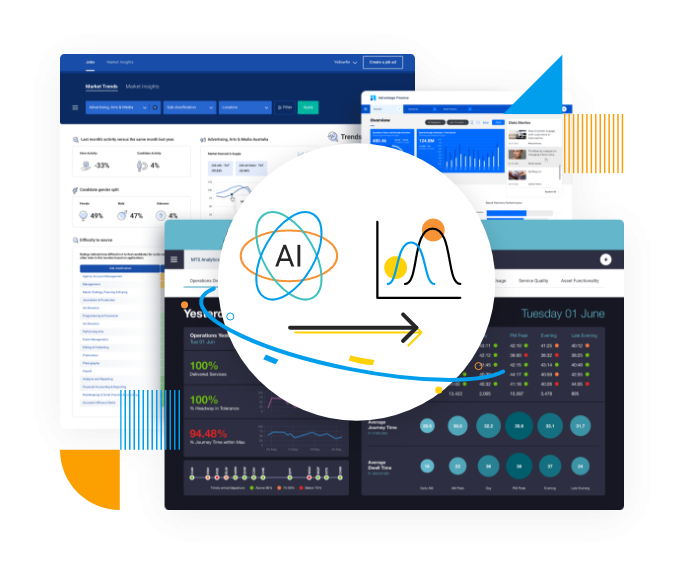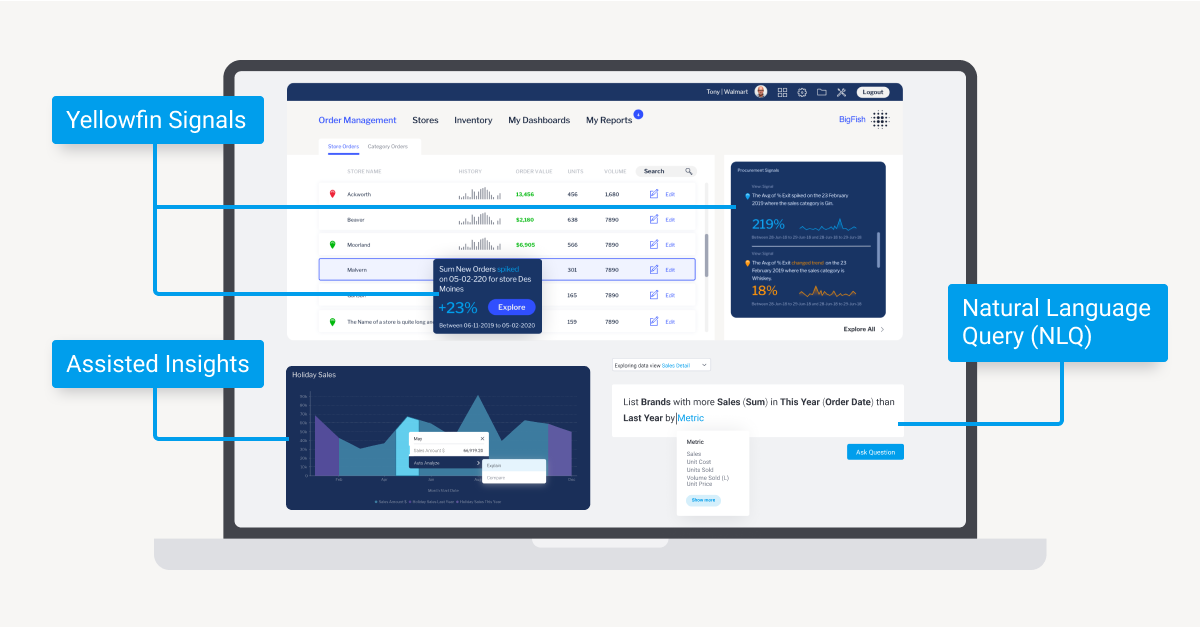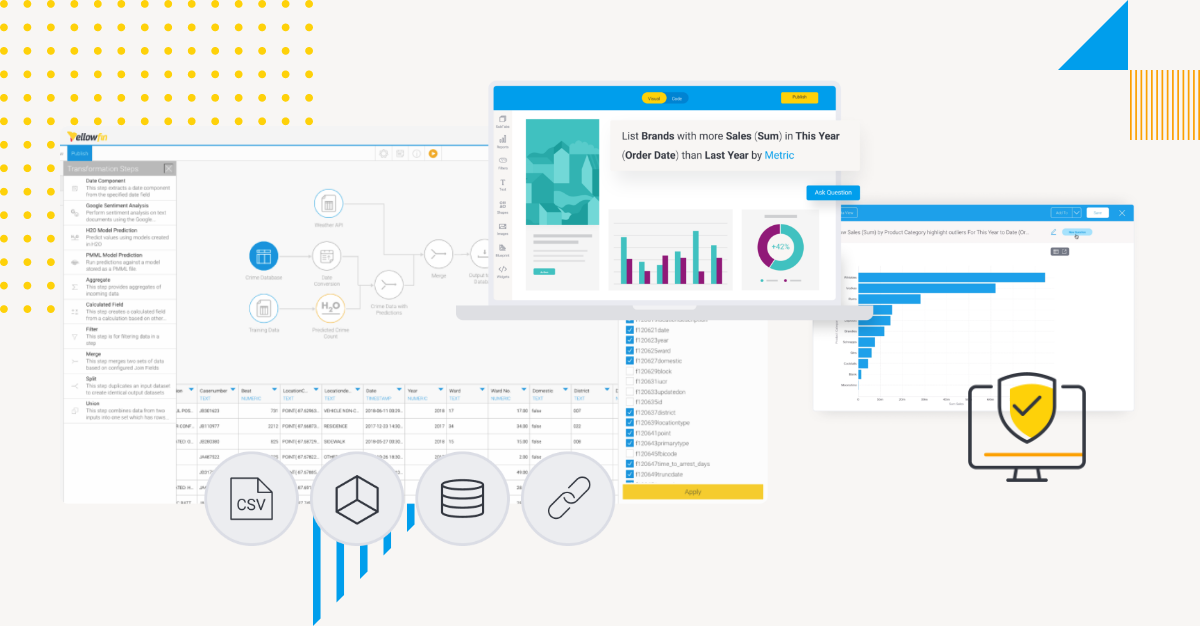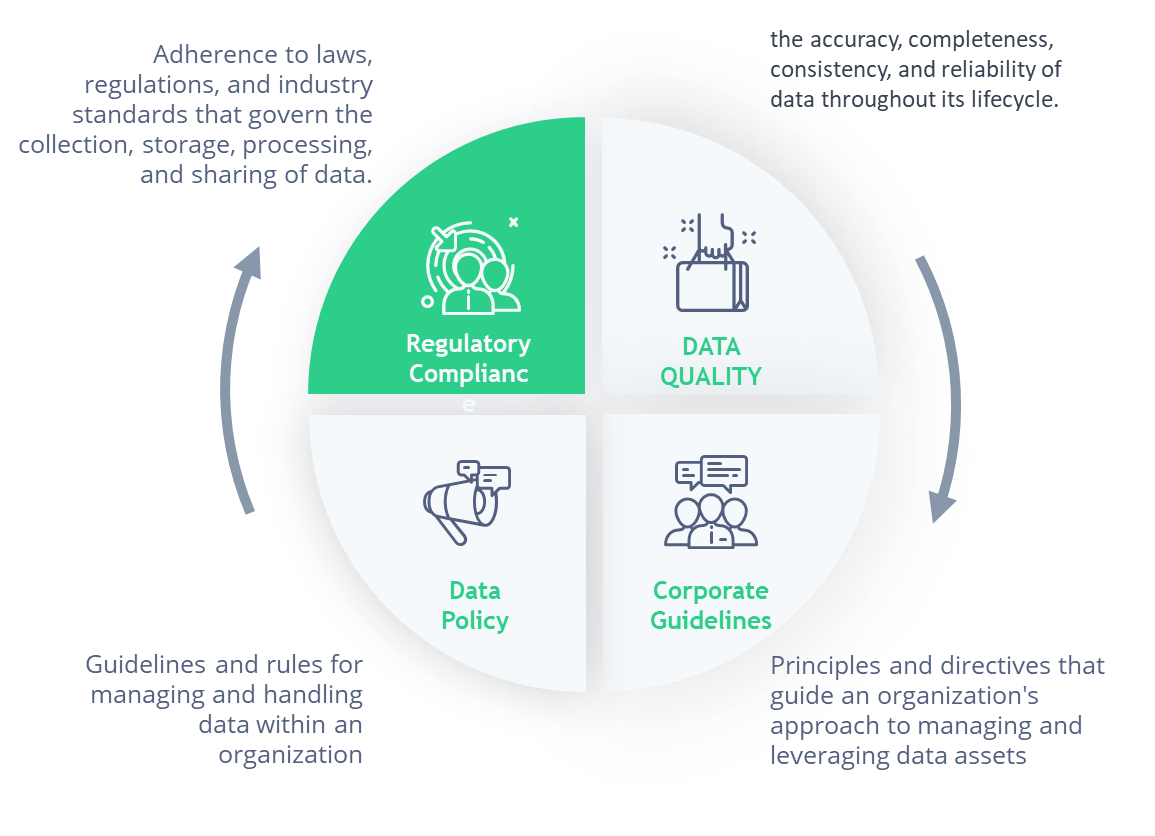2025 is poised to be another year of significant advancements in business intelligence (BI) and analytics. Building on the momentum of 2024, which saw a surge in self-service BI adoption, our attention turns to newer, sophisticated artificial intelligence (AI) solutions.
As the data landscape evolves, it’s important to keep agile and adapt to emerging technologies to stay competitive and maximize the value of your analytics investments.
In this article, we’ll delve into 2025’s top data analytics trends, as well as provide free resources you can leverage to get up-to-speed and prepare. If you missed this year’s trends, you can catch up on the top 3 data and analytics trends in 2024.
Trend #1 - Opening up data and insights for everyone via Augmented Analytics
Opening up data access and analysis capability to everyone, regardless of technical expertise, is a recurring objective among businesses adopting modern BI solutions today. Thanks to the continuing development and integration of multiple transformative technologies into our analytics solutions, including automated business monitoring (ABM), artificial intelligence (AI), machine learning (ML) and natural language technologies (including NLP, NLG and NLQ), the concepts of data democratization and self-service analytics are becoming more of a reality. Data democratization is the main promise of augmented analytics, also referred to as AI analytics. Augmented analytics combines automation and AI technologies and deploys them within BI and analytics solutions to streamline the analysis process - data preparation, discovery, insight generation and insight explanation - for all end-users. It also uses these technologies to better understand user intent, and recommend appropriate data sources and best practices. The purpose of augmented analytics is to break down data silos and empower a wider range of people to contribute and use the BI and analytics tools your business invests in for data-driven decision-making, rather than continue to rely on IT to explain the results for them. This new class of modern data user, enabled by AI and automation, is called the augmented consumer.
Yellowfin predicts augmented analytics will continue to be a dominant force in 2025, empowering data experts and regular business people alike with the latest AI-powered tools to automate tedious tasks like data preparation and data visualization, and allow both types of analytics users to more easily access their data, get to the analysis stage faster, focus on asking the right questions and interpreting results more accurately. Advisory firms such as Gartner expect 90% of current analytics content consumers to become content creators enabled by AI-powered tools, offered by their BI solutions, by the end of 2025, while AI enterprise surveys have found 79% of corporate strategists see AI and analytics as critical for success over the next two years. The global augmented analytics market size is also expected to reach $29.8 million by 2025.
While augmented analytics is still evolving, certain BI vendors offer exclusive AA tools as part of their solutions suite. Yellowfin, for example, leverages AI and automation to provide powerful AA tools to its end-users, including our Assisted Insights, Guided NLQ and Signals products. These features streamline data processes and significantly simplify analysis for both basic and advanced users. Basic users can leverage them for straightforward analytics, while advanced users (analysts) can use them as a fast foundation for more complex and in-depth analysis.
The purpose of augmented analytics is to break down data silos and empower a wider range of people to contribute and use the BI and analytics tools your business invests in for data-driven decision-making, rather than continue to rely on IT to explain the results for them. This new class of modern data user, enabled by AI and automation, is called the augmented consumer.
Yellowfin predicts augmented analytics will continue to be a dominant force in 2025, empowering data experts and regular business people alike with the latest AI-powered tools to automate tedious tasks like data preparation and data visualization, and allow both types of analytics users to more easily access their data, get to the analysis stage faster, focus on asking the right questions and interpreting results more accurately. Advisory firms such as Gartner expect 90% of current analytics content consumers to become content creators enabled by AI-powered tools, offered by their BI solutions, by the end of 2025, while AI enterprise surveys have found 79% of corporate strategists see AI and analytics as critical for success over the next two years. The global augmented analytics market size is also expected to reach $29.8 million by 2025.
While augmented analytics is still evolving, certain BI vendors offer exclusive AA tools as part of their solutions suite. Yellowfin, for example, leverages AI and automation to provide powerful AA tools to its end-users, including our Assisted Insights, Guided NLQ and Signals products. These features streamline data processes and significantly simplify analysis for both basic and advanced users. Basic users can leverage them for straightforward analytics, while advanced users (analysts) can use them as a fast foundation for more complex and in-depth analysis.
 The integration of augmented analytics tools, such as Yellowfin’s exclusive feature-set into your data analytics process, offers several key advantages, including:
Accelerated insights and reduced errors: AI-powered data query tools like Guided NLQ enable users to quickly and accurately access insights through natural language queries, minimizing the risk of human error.
Proactive decision-making: Automated analytics and monitoring tools like Signals proactively identifies anomalies and trends in your data, empowering the entire organization to anticipate future outcomes and make informed decisions.
Uncovering hidden insights: Tools like Assisted Insights which leverage machine learning to uncover hidden patterns and relationships within data can help more people quickly access AI-generated explanations and comparisons of the results, and lead your end-users to more comprehensive and actionable insights.
In addition to Yellowfin's extensive in-built AI analysis tools, we also offer AI chatbot assistants, Ask Yellowfin and Code Assistant, to help guide your end-users through Yellowfin documentation and to generate code snippets, respectively.
The integration of augmented analytics tools, such as Yellowfin’s exclusive feature-set into your data analytics process, offers several key advantages, including:
Accelerated insights and reduced errors: AI-powered data query tools like Guided NLQ enable users to quickly and accurately access insights through natural language queries, minimizing the risk of human error.
Proactive decision-making: Automated analytics and monitoring tools like Signals proactively identifies anomalies and trends in your data, empowering the entire organization to anticipate future outcomes and make informed decisions.
Uncovering hidden insights: Tools like Assisted Insights which leverage machine learning to uncover hidden patterns and relationships within data can help more people quickly access AI-generated explanations and comparisons of the results, and lead your end-users to more comprehensive and actionable insights.
In addition to Yellowfin's extensive in-built AI analysis tools, we also offer AI chatbot assistants, Ask Yellowfin and Code Assistant, to help guide your end-users through Yellowfin documentation and to generate code snippets, respectively.
Yellowfin augmented analytics content resources
Check the essentials: What is Augmented Analytics? Download free whitepaper: Embedding AI-Powered Analytics Into Your App Get free tips: Embedding AI-Powered Analytics Into Your App Learn the benefits: From AI to BI: Navigating ML Implementation with Yellowfin (free on-demand webinar)Trend #2 - Taming the data deluge with data governance
While the allure of powerful analytics solutions is undeniable, unlocking their true potential hinges on a critical but often overlooked aspect – data governance. In 2025, organizations seeking to leverage BI for strategic decision-making will find data governance a key pillar for success. What data governance is comes down to a structured framework to guide the management of your organization's data assets and the linking of data and analytics to targeted and quantified business outcomes and metrics. This same framework specifies the accountability, ownership and decision rights to ensure data accuracy, control, consistency, and security across the entire data lifecycle, from collection to analysis. While important, it is often overlooked as an initiative. Without proper data governance, valuable insights can be obscured by errors, inconsistencies, and duplicate information. You may not empower the right people in the business to help ensure data and analytics is utilized correctly without it. This is particularly true in the age of big data, where vast amounts of information flow through various systems, and with the upcoming EU AI Act in February 2025, having a standardized framework in place is key to avoid non-compliance.
The rapidly rising importance of data governance in 2025 also ties in with the adjacent trend of augmented analytics, as Gartner expects 60% of organizations will fail to realize the value of their AI analytics use cases with augmented analytics solutions due to incohesive data governance frameworks, while Forrester predicts 40% of enterprises will combine data and AI governance in 2025. If you weren’t prioritizing governance before, now is the time to do so.
Without proper data governance, valuable insights can be obscured by errors, inconsistencies, and duplicate information. You may not empower the right people in the business to help ensure data and analytics is utilized correctly without it. This is particularly true in the age of big data, where vast amounts of information flow through various systems, and with the upcoming EU AI Act in February 2025, having a standardized framework in place is key to avoid non-compliance.
The rapidly rising importance of data governance in 2025 also ties in with the adjacent trend of augmented analytics, as Gartner expects 60% of organizations will fail to realize the value of their AI analytics use cases with augmented analytics solutions due to incohesive data governance frameworks, while Forrester predicts 40% of enterprises will combine data and AI governance in 2025. If you weren’t prioritizing governance before, now is the time to do so.
 To establish a strong data governance framework, many businesses opt to select a BI vendor equipped with advanced data governance and control tools built into the solution that help standardize the data governance framework you put in place throughout the organization.
Having a BI tool that specializes in governance assists to better centralize data, maintain its quality, and ensure its availability. For instance, Yellowfin provides an administration console for centralized control over data sources, users, and data usage, to better optimize BI environments and manage deployments. Yellowfin features, like Content Folders, help facilitate governance over content by ensuring the right groups and users get access to the right data they have access to, while Yellowfin’s data preparation module enables the building of a meta-data layer to clean data to ensure it is trustworthy and accurate, and create new content in a secure way.
To establish a strong data governance framework, many businesses opt to select a BI vendor equipped with advanced data governance and control tools built into the solution that help standardize the data governance framework you put in place throughout the organization.
Having a BI tool that specializes in governance assists to better centralize data, maintain its quality, and ensure its availability. For instance, Yellowfin provides an administration console for centralized control over data sources, users, and data usage, to better optimize BI environments and manage deployments. Yellowfin features, like Content Folders, help facilitate governance over content by ensuring the right groups and users get access to the right data they have access to, while Yellowfin’s data preparation module enables the building of a meta-data layer to clean data to ensure it is trustworthy and accurate, and create new content in a secure way.


